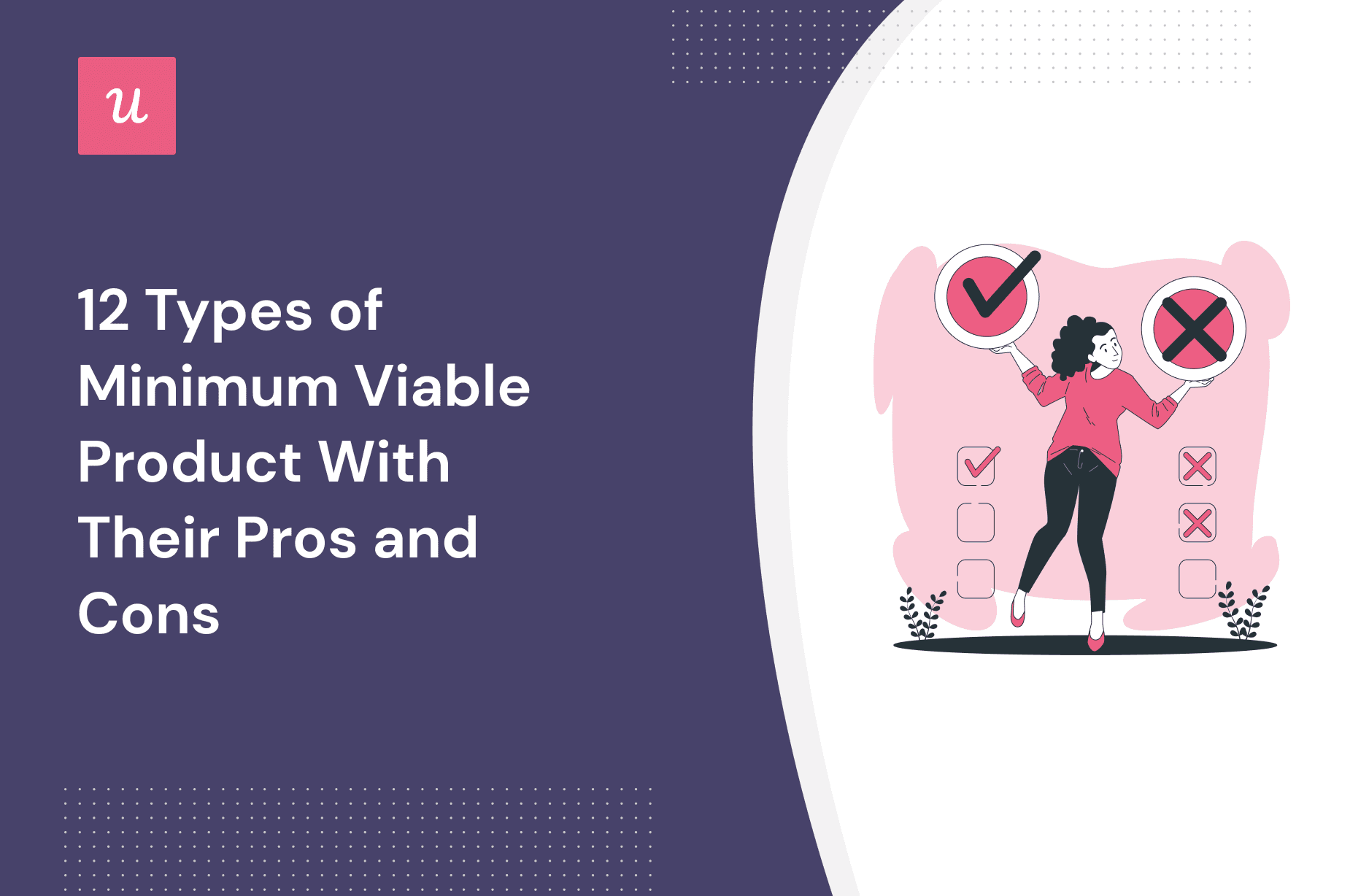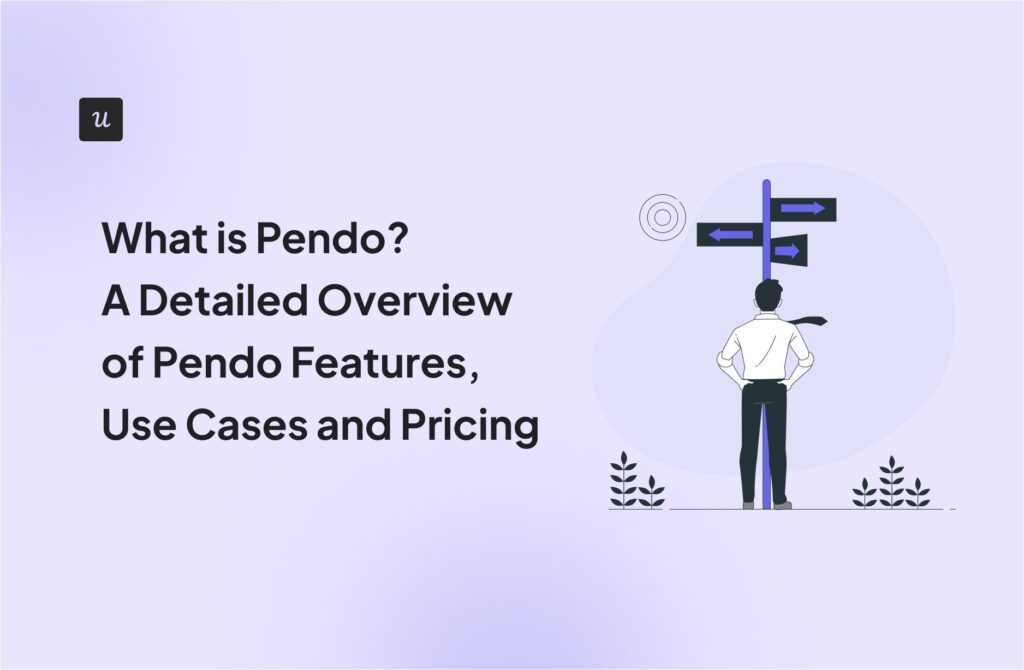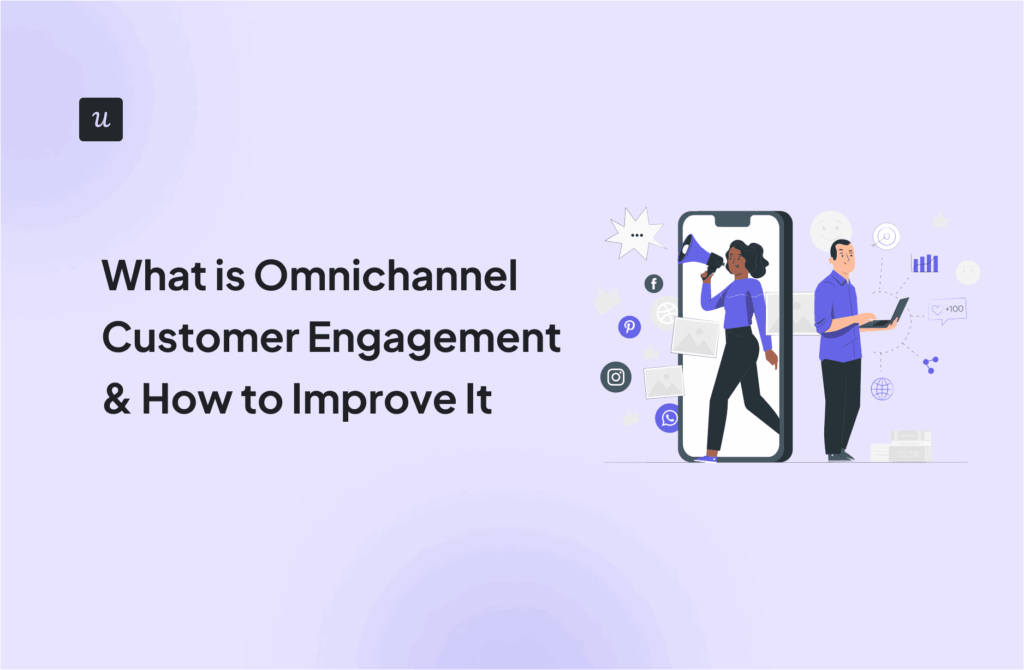
12 Types of Minimum Viable Product With Their Pros and Cons
Get The Insights!
The fastest way to learn about Product Growth, Management & Trends.
What is a minimum viable product?
A minimum viable product (often referred to as an MVP) is a version of a product with just enough features to be usable.
First popularised by Eris Reis in the seminal book ‘The Lean Startup’, the idea is to quickly validate a product idea by providing something that can be used by early adopters – who can then provide valuable feedback for future product development.
There are many things an MVP can help you with:
- Provide immediate value to your users
- Minimize development costs
- Offer a chance for validated learning of a product idea
- A better understanding of what your users really need
- Set you on a path of continuous improvement
Low fidelity MVP vs high fidelity MVP
Let’s make a distinction between two very different types of minimum viable products:
- Low-fidelity. Quickly validate a business idea or new product features with minimal effort. You can use a low-fidelity MVP to gauge the interest and needs of customers in your target market – and define the core features your product should contain.
- High-fidelity. Typically representing the next stage of development after a low-fidelity mockup, this is a much more detailed representation of your product. You could think of this as a path to defining a ‘minimum marketable product’ – one you can launch to an initial customer base once you’ve validated your app idea.

What are the types of low-fidelity MVPs?
Let’s explore how low-fidelity MVPs can help you quickly validate product ideas and gather feedback from interested users.
#1 – Landing page MVP for testing your product’s unique value proposition
What is it? A page that succinctly describes the product value (or feature) you’re launching before you’ve built it to gauge interest from potential customers.
Pros:
- A landing page MVP is not time-consuming – you can validate an idea in an afternoon!
- Extremely cost-effective way to understand demand
- Insight based on real user behavior (i.e. if they sign up, they’re demonstrating interest)
Cons:
- No test of functionality or how a feature will actually land with consumers
- Easy to oversell: your product must live up to expectations

#2 – Email MVP test
What is it? A similar concept to the landing page test, with all the advantages. The key difference is that instead of a static web page, this MVP type involves sending info directly to real users via email.
Pros:
- More insightful, segmented customer feedback
- An efficient solution for validating an idea quickly
- Requires no software development process
Cons:
- No insights on real customer behavior
- Users can easily ignore or miss an email

#3 – “The Fake Door” minimum viable product test
What is it? Build a ‘fake door‘ – whether that’s a menu item, a button, or a tooltip – on top of your existing product UI. You’re gauging a deeper level of interest – they actually want to use a specific feature.

Pros:
- A good example of how to inform the right MVP direction
- Identify potential customers using your existing solution as a launch pad
- More in-depth and realistic than via email or landing page
Cons:
- Could frustrate users who are expecting further development of a specific feature
- No behavioral insights to inform the product design process

#4 – Low-fidelity MVP design prototype
What is it? This sort of minimum viable product MVP can take many forms – a sketch, a wireframe demonstrating broader UX, or a more robust mockup that closely mirrors the functionality you expect to deliver.
Pros:
- Much better at collecting feedback from the first customers you’d look to target
- Requires minimal development work compared to a fully developed feature or product
- Works as an MVP model you can iterate toward your final product (i.e. more features included)
- Particularly useful for software or other tech tools
Cons:
- Requires more effort than other MVP types
- Gives you an idea of a viable solution but requires more in-depth testing

#5 – Demo video MVP concept
What is it? A short, simple, explainer-style video that sets out the main features your product offers, the value proposition, and why users should buy it.
Pros:
- An explainer video mvp is an engaging way of showing off your product
- Once you invest the time in making one video, it can be shared many times
Cons:
- Some users prefer hands-on experience to demo videos
#6 – Low-fidelity MVP designed for crowdfunding projects
What is it? A form of minimum viable product MVP designed to attract customers up front and raise money to actually build the product prior to launch.
Pros:
- Presells an idea and ensures product-market fit prior to launching
- The crowdfunding MVP has a proven model – there are many crowdfunding platforms (and other types of product investment platforms) to choose from
- No dev effort upfront
Cons:
- Living up to expectations: several crowdfunded MVPs fail to materialize
- Some consumers view this as just one of many marketing strategies

High-fidelity MVP types
Next up, we’re going to look at high-fidelity MVPs. While they typically require further product development and much greater effort, they bring their own benefits.
#7 – Single Feature MVP with the product’s core functionality
What is it? The key idea behind this sort of MVP is that you want your users to focus on one core feature (or singular area of functionality). Many startups have used this model to get off the ground.
Pros:
- Depth of understanding: users can evaluate a focused offering much more effectively
- Understanding user behavior with just one feature can be extrapolated to broader product choices
- Reduce the risk of building undesirable features
Cons:
- Can be tricky to focus your development team without getting sidetracked

#8 – Minimum lovable product
What is it? This is a similar concept to the single feature MVP, with one key difference. Rather than drawing the line at minimum functionality, you’re looking at how much customers love your product.
Pros:
- Identify the other features you need to solidify your competitive advantage
- Nail a business concept quickly that will lock in loyal users from the get-go
Cons:
- Many startups fail through overextending too quickly: be careful not to include too many features (remember they can always go in the next version)
#9 – High-fidelity digital prototype MPV to give potential users a better feel of the product
What is it? This isn’t a functional product: instead, it’s a super high-fidelity mockup or prototype of a product.
Pros:
- Get user engagement without significant investments of time and effort
- Drum up interest from users likely to pre-order MVP
- Quickly build a sense of how your initial product will land
Cons:
- While you can understand usability, clickable high-fidelity prototypes typically don’t have data so aren’t a 100% accurate way to gather user feedback
- Functionality may be hard to replicate when you build your actual product
#10 – High-fidelity prototype in the form of a concierge MVP
What is it? While to your users it may seem they’re interacting with a fully functioning piece of software, in reality, you’re with them every step of the way.
Pros:
- Validate how effective your solution is with your target audience before starting development
- Particularly useful for service-based startups
Cons:
- Users won’t always have the ‘concierge’ experience: other prototypes may be required
#11 – Wizard of Oz MVP
What is it? An ‘oz mvp’ takes its name from the famous Wizard of Oz, hiding behind a curtain. At the surface level, you’ve got a functional product. But behind the scenes, activities are completed manually. Unlike the concierge MVP, the idea is to hide the manual elements.
Pros:
- Test concepts that would require large amounts of dev effort
- Gain deeper insights into user behavior
Cons:
- An oz MVP still requires extensive setup
- May not be suitable for simpler technologies (i.e. not something like machine learning)

#12 – Piecemeal MVP created using existing tools and solutions
What is it? A pragmatic solution: the main idea is to use your existing tools and features rather than developing unique software. Groupon is a famous example, connecting customers with local businesses using WordPress, Apple Mail, and a tool to generate PDF coupons.

Pros:
- Move quickly: leveraging your existing resources is a hallmark of any successful business
- Save time and effort validating an idea without building something new
Cons:
- Can be complex to pull together
- Risk of friction for your users
Which type of MVP is best for your SaaS business?
In a nutshell, it depends on a whole host of factors:
- To gauge interest from potential customers, use a landing page MVP.
- In order to gauge interest from a targeted group, use an email MVP.
- To build an idea of who wants to use a new feature, use a fake door MVP.
- In order to start collecting more specific feedback without writing code, use a low-fidelity prototype MVP.
- To communicate a value proposition and utilize storytelling, use a demo video MVP.
- If you want to generate a buzz and market your idea, use a crowdfunding-style MVP.
- To validate just the core components, use a single-feature MVP.
- Identify product market fit and understand what will build loyalty, use a minimum lovable product.
- To give users a sense of the look and feel of a product, use a high-fidelity digital prototype.
- Use a concierge MVP to take your users step by step through a product.
- Create a sense of a polished final product using a Wizard of Oz MVP.
- To get a viable solution out quickly without investing lots of time and effort in building something new, use a piecemeal MVP.
Minimum viable products examples from popular brands
Next up, we’re going to take a look at some MVP examples from the real world.
Slack
Slack is a ubiquitous communication platform in the SaaS world. But it began as a piecemeal MVP: the founders created a simple chat tool to use within their team, and slowly iterated and learned (i.e. through split tests).
This grew the product over time based on huge volumes of user feedback.
Dropbox
Dropbox began life back in 2008 as a simple four-minute demo video MVP. The founder, Drew Houston, takes users through the application’s main features and clearly sets out a value proposition.
This helped drum up interest, building a waiting list for a beta version of the app from just 5k to over 75k users.

Airbnb
Airbnb founders Brian Chesky and Joe Gebbia went for an extremely simple MVP: a basic website with limited functionality (no more than a collection of landing pages really) with a few photos of their apartment.
They saw a spike in interest from attendees of a local conference and iterated the product as demand grew to build a marketplace based on user needs.
Importantly, this demonstrates that your business model can evolve alongside your MVP.

Conclusion
That wraps up our deep dive into the interesting world of MVPs.
Hopefully, you now have a solid understanding of what a minimum viable product is, the types of minimum viable products out there, and the context in which they can help.
Want to build product experiences code-free? Book a demo call with our team and get started! Check out the banner below for more information and to get started on your MVP today.






